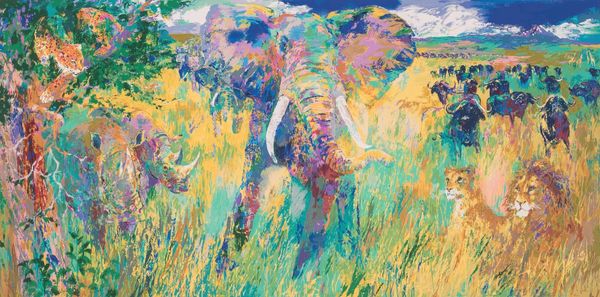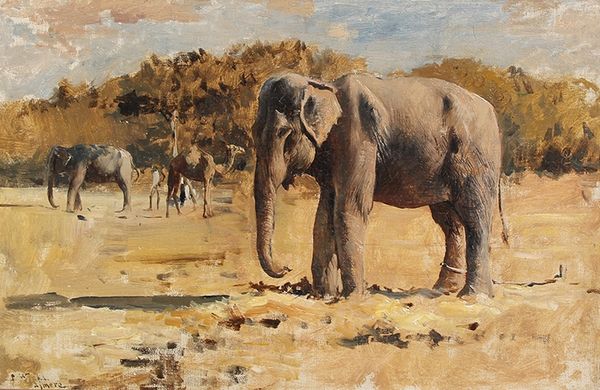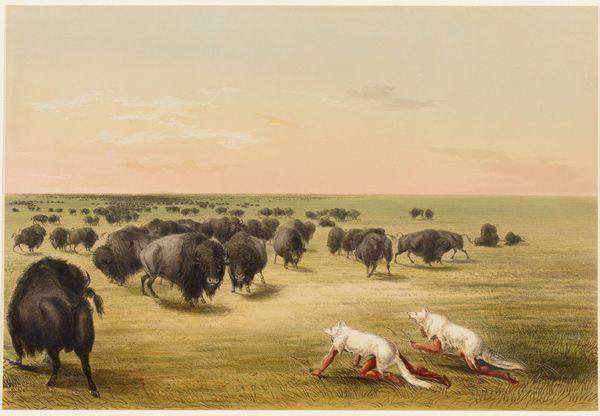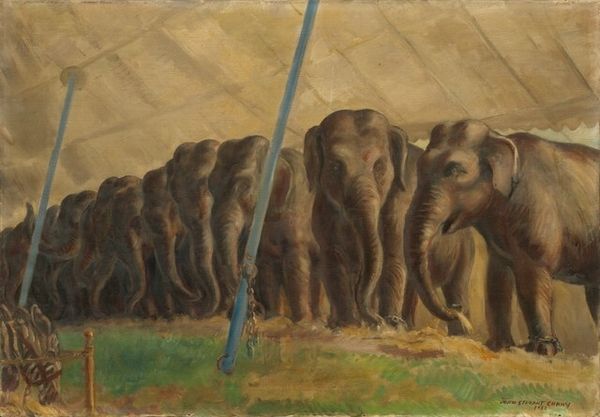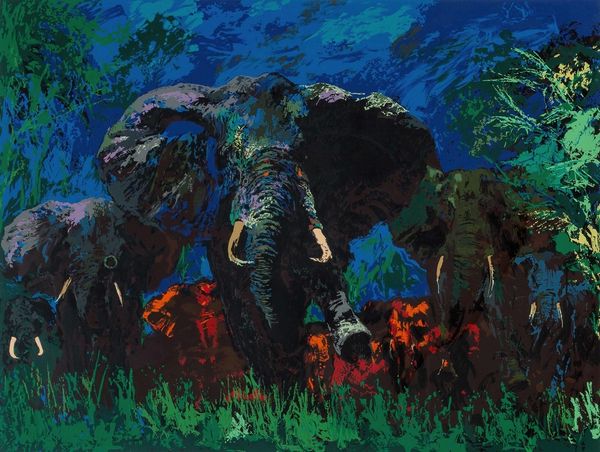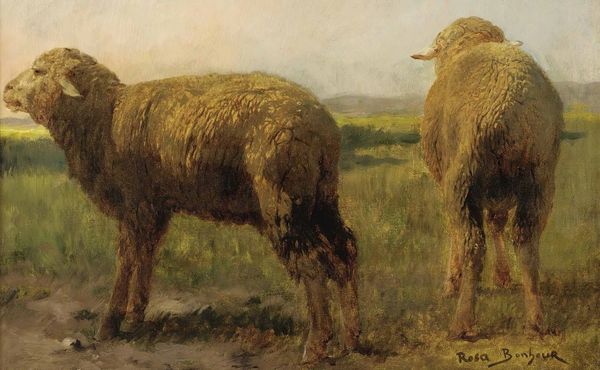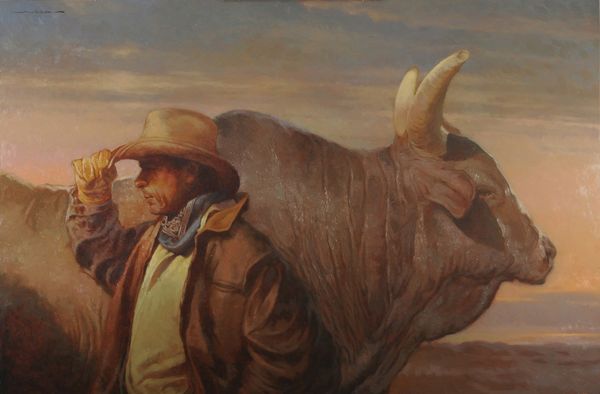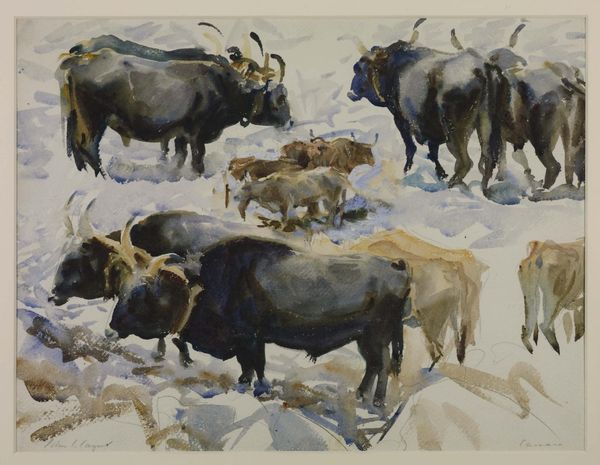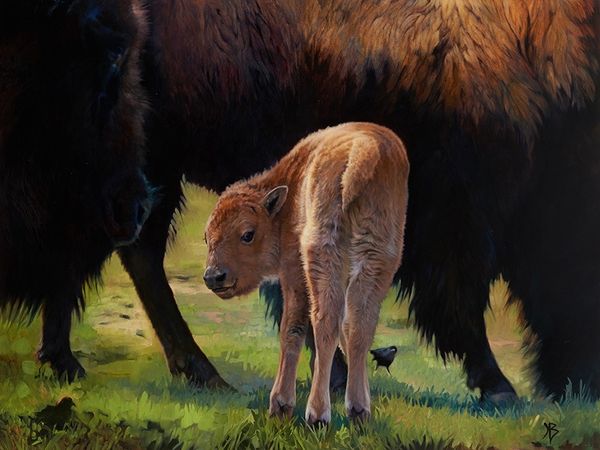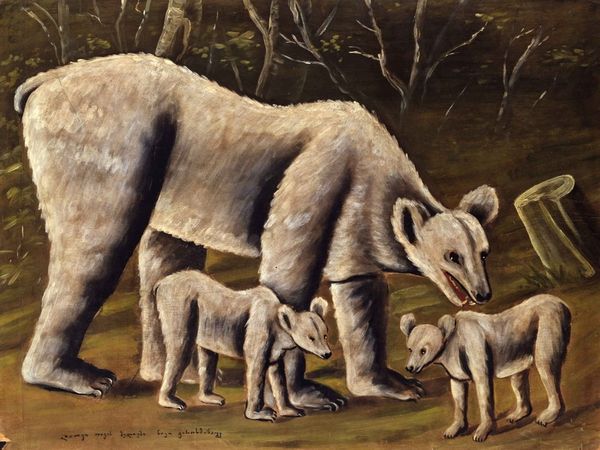
oil-paint, impasto
#
animal
#
oil-paint
#
landscape
#
oil painting
#
impasto
#
animal portrait
#
naturalistic tone
#
genre-painting
#
realism
Copyright: Public Domain: Artvee
Curator: Here we have "Elefanten auf der wanderung," an oil painting believed to be by Wilhelm Kuhnert. Editor: The first thing that strikes me is how the artist has captured the slow, lumbering grace of these elephants against that vast, sun-drenched landscape. Curator: Absolutely. Kuhnert, known for his animal paintings, likely produced this work during a period when European artists were increasingly drawn to depictions of the natural world, particularly scenes from Africa. It's fascinating to consider the means by which Kuhnert obtained reference materials – possibly from zoo animals or printed sources - and how that mediated his vision. Editor: And the light! Observe how it dances across their hides and illuminates the swaying grassland. There's a certain mastery in conveying texture – the roughness of the elephants' skin against the feathery, tactile brushstrokes that suggest the savannah. Curator: The painting really engages questions surrounding European exploration and colonial views of the animal kingdom. One can imagine how the perception and consumption of wildlife art were part of larger industrial networks where commercial art studios capitalized on public interest in the exotic. Editor: Yet, divorced from all of that, on purely aesthetic terms, note how Kuhnert creates such depth, pushing our view far into the distant horizon using masterful perspective and the clever diffusion of light. See, also, the formal choice of rendering those cumulonimbus clouds with short, thick strokes – echoing the texture of the terrain. Curator: Indeed. Considering this was produced within a socio-economic structure that profited from the exploitation of natural resources, even something as simple as obtaining the pigment for the oil paint reveals a supply chain reaching back to colonial contexts. How the artwork might also speak to our current awareness regarding species extinction. Editor: Despite these valid material concerns, in isolating its aesthetic achievement, I’m left reflecting on the artwork's success in conveying a tangible feeling of atmosphere and animal majesty through formal elements alone. Curator: Seeing it this way opens conversations regarding how art serves purposes beyond merely being objects of beauty and contemplation. Editor: Fair enough. I will concede it's the confluence of its composition, color, and content that render this seemingly simple wildlife scene much richer than the eye initially perceives.
Comments
No comments
Be the first to comment and join the conversation on the ultimate creative platform.

